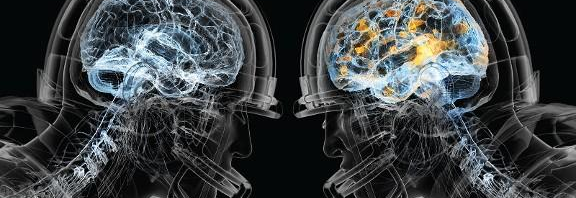Injuries are par for the course in sports. Athletes experience their fair share of muscle strains and tears, but perhaps the most severe injury is one that occurs to a vital organ: the brain. Concussions are a common injury in sports today. It’s rare that you will meet an athlete who hasn’t experienced a concussion or at least doesn’t know someone who has. So, what exactly is a concussion and why are they such an alarming injury for an athlete?

Biological Changes from Concussions
During a brain injury like a concussion, the brain is literally shaken up like a bowl of Jell-O and bounces around inside the skull. This causes the neuron membranes to be stretched and pulled around, which allows ions and glutamate to enter and leave the cell. Movement of ions and neurotransmitters during injury cause an imbalance that requires the action of pumps to reestablish an equilibrium. These pumps require more energy, which means glycolysis is increased. All of these processes put the brain into overdrive.

With the increased glycolysis (energy production), glucose metabolism is decreased due to excessive glucose levels in the brain and systems being overworked and impaired. These biological changes during a concussion last for a few days following the injury. The ion imbalance, particularly Ca2+ ion imbalance, remains for 3-4 days post injury. Decreased blood flow and thus decreased nutrient delivery to the brain lasts for 7-10 days following injury. Finally, decreased glucose production and presence also lasts for 7-10 days post injury. These biological changes are responsible for the symptoms associated with concussions.

When is it Safe?
It is extremely important to let the brain fully recover from a brain injury, like a concussion. The mental and physical impairments are a hindrance enough from just one concussion, but if a person experiences a secondary injury before fully recovered from the first the biological effects are exacerbated and recovery will take more time.
Currently, we rely on an athlete’s word as to if they are experiencing physical symptoms associated with concussions. These would include migraines/headaches and mental impairments like a lack of ability to focus. Too often however, an athlete experiences pressures to return to play as soon as possible. This pressure can come from a variety of sources: family, friends, teammates, fans, personal ambitions, the love of playing, wanting to appear tough.
Can we trust an athlete to be truthful about what they are experiencing? Do they know the dangers of returning to play too soon? If only there was some biological test athletes could take to indicate if their brain was healed after a concussion.

Biomarkers: a biological indicator
Researchers are currently investigating biomarkers, molecules present in the blood and fluid in the brain that appear following injury, as a possible biological indicator of concussion. Their hope is to identify biomarkers that are indicative of concussion and use them to tell when a person’s brain has healed following a concussion. Biomarkers could also provide insight into treatment of concussions, telling us what treatments work best.

Until these biomarkers are identified and legitimized, we must rely on athletes’ personal accounts and medical professionals’ observations to guide athletes’ return to play timeline. In order to ensure athletes are waiting to return to play until fully recovered, they need to be educated on the consequences of a secondary injury and effects of sub-concussive hits. Sub-concussive hits are repeated injuries the brain experiences that are not severe enough to be identified as a brain injury but add up over time to cause biological changes like a concussion. Perhaps a prerequisite to playing sports should be a thorough training on concussion effects, recovery and prevention to teach athletes how to play smarter and not harder.
More on the science behind concussion here: https://www.ncbi.nlm.nih.gov/pmc/articles/PMC4479139/pdf/nihms657022.pdf
Feature Image: http://upr.org/post/nfl-admits-cte-concussion-prevention-utah-youth-back
Other images:
http://atalantadancefitness.blogspot.com/2013/10/concussion-in-dance-and-aesthetic-sports.html
http://www.concussionclinic.co.uk/2_about.html
http://www.healthyroster.com/school-districts/
https://www.mccare.com/solutions/biomarker.html
